This soothing chickweed salve recipe is an absolute staple on our homestead. Insect bites, rashes, cuts and burns are common occurrences around here and my chickweed salve always saves the day!
The best thing about using chickweed is that it’s a common “weed” that grows just about everywhere. You likely have some growing in your backyard that’s just waiting to be picked.
Making a chickweed salve from scratch is super easy, cheap and requires minimal equipment. The little tins make great gifts, too!
Let’s jump in!
*Disclosure: This post may contain affiliate links to products (including Amazon). I’ll earn a small commission if you make a purchase through my link, at no additional cost to you! Regardless, I only link to products that I personally use on our homestead or believe in.
Why You’ll Love This Chickweed Salve Recipe
Chickweed is a humble plant, but it really excels at healing and soothing the skin! If you have a burn, use chickweed. If you get into stinging nettle, use chickweed. If you have mosquito bites, use chickweed. See the pattern here? It’s simply amazing. Let’s breakdown all of the beneficial properties that chickweed has to offer.
Healing & Cooling
The instant, cooling relief that I get when applying chickweed to a hot, puffy rash from stinging nettle is no coincidence! Chickweed is well-known for it’s cooling and soothing properties. If your skin is hot, itchy, rashy or puffy, you’ll likely find relief from chickweed.
Chickweed is even effective for bigger skin issues like minor burns and minor cuts. I currently have a steam burn from canning last week and I’ve noticed it healing much faster (and more comfortably) since applying my chickweed salve. If you have a significant wound or burn, please seek professional medical help, but for minor ones, chickweed salve is a great option!
Astringent
Chickweed also has potent astringent properties, which means it can “pull” or “draw out.” This can be useful for deep splinters in assisting their removal. It can also help dry or shrink tissue, and reduce discharge.
Anti-inflammatory
Chickweed is amazing at reducing inflammation. I can feel the heat of a bite or injury fade away when I slather on my chickweed salve. A 2017 study dug into this further and they found that chickweed significantly decreased intracellular inflammatory markers. Their conclusion was that the potent anti-inflammatory affect of chickweed is due to its high antioxidant content. Super neat!
Chickweed salve uses:
- Acne
- Bug bites
- Bee stings
- Dry, irritated or cracked skin
- Eczema
- Infection
- Itchy skin
- Minor scrapes
- Minor wounds
- Minor burns
- Nettle stings
- Poison Ivy
- Rashes
Where to Find Chickweed
The tricky thing about chickweed compared to most other herbal remedies is that chickweed has to be used fresh. It rapidly loses its active components if it’s stored in the fridge for too long or dried. Let’s chat about some options for obtaining fresh chickweed!
Foraging for chickweed
The great thing about chickweed is that it is considered a “weed” by most because it’s everywhere and it loves to take over! Chances are high that you have some growing in your backyard or local park. Chickweed can be found nearly everywhere.
How to identify chickweed
Chickweed is easy to spot, thanks to their bright star-like flowers. They grow low to the ground and are often found in patches. The stems are delicate and have a bit of “grip” to them, similar to velcro. Once you know what you’re looking for, you’ll start to spot it everywhere!
There’s only 1 chickweed look-alike to be aware of and that’s scarlet pimpernel, which is toxic. Thankfully, it’s not that similar, though. Scarlet pimpernel has orange flowers and the stems don’t have the “grippiness” to them. The stems are smooth.
How to harvest chickweed
Harvesting is super simple. Grab your pruning shears and trim off the top portion of the plant, leaving its bottom set of leaves so it can regrow. Place your harvested chickweed greens and flowers in a basket to bring indoors.
Farmer’s Market or CSA
You miiiiight be able to find some fresh chickweed from your local farmer’s market or CSA (Community Supported Agriculture). It’s worth asking around! Again, chickweed degrades rapidly and should be used right away, so a local source is your best bet for finding it fresh.
Can’t find fresh chickweed?
If you’ve gone for a nature walk and came home empty-handed, don’t despair! There are still some great options for you.
Purchase some chickweed salve
If you want to enjoy the healing benefits of a lovely chickweed salve, but can’t come up with the ingredients to make it yourself, there’s some pre-made options out there!
The Homesteading RD's Product Picks | |
All natural ingrediants and handmade in small batches in Ohio's Amish Country: Minimally processed - You can actually SEE the Chickweed in the salve!! | |
Plant your own chickweed
This one takes a bit more preparation, but it’s my favorite option (of course)! Chickweed grows, well, like a weed! Just be careful where you plant it because it can really start to take over.
Chickweed thrives in rich, moist, cool garden soil and prefers sun or part sun. It seems to really like the edges of our woods; protected, yet some sun exposure. Chickweed will reseed itself year after year, so you only need to plant it once.
The Homesteading RD's Product Picks | |
Want to try growing your own chickweed? Give these a try! My favorite seed companies don't offer chickweed seeds, but good ol' Amazon came to the rescue with these. | |
Katie’s Chickweed Salve Recipe
My chickweed salve recipe is super simple to make and creates a perfect salve, every time. The salve tins make great additions to your own apothecary or gifts for your friends and family. Let’s jump in!
Gather your supplies
- Fresh chickweed – at least a decent handful
- Extra virgin olive oil (cold pressed) – enough to cover the chickweed
- Beeswax – ¼ cup per 1 cup of oil
- Essential oils (optional) – I like lavender because it has potent wound healing properties, plus it has a relaxing, soothing scent that most people enjoy.
- Knife
- Cutting board
- Double boiler
- Pot
- Strainer
- Glass measuring cup
- Salve containers (2oz) – for storage
The Homesteading RD's Product Picks | |
Organic, high-quality beeswax for making salves, wax candles, lip balm, wax food wraps and sealing cutting boards. Also used to make beard balms, lotion bars, salves, hair pomades, body butters and more! | |
Made of 18/8 Stainless steel, this is the perfect tool to gently melt ingredients without burning or destroying their nutritional value. This is the perfect size for making salves, chapsticks, you name it! I bought the 480 mL size and wish I had gotten the 600 mL. | |
These are the perfect size for my chickweed salve recipe. Easy to keep in your purse, bedside table or apothecary. These make great gifts, too! | |
These were WAY too cute to not include here! They are (of course) twice as expensive as the standard salve tins above, but how cute are they!? | |
Allow fresh chickweed to wilt
Chickweed has a high water content, so you’ll need to let it dry out a little bit (but not too much!) before making the chickweed salve recipe. If you skip this step, then your salve might start to grow mold – no thanks!
On the counter method
This is the easiest method and the one that I personally use. Simply spread out your fresh chickweed in a single layer on your counter. After 8-12 hours, the chickweed should be limp and less moist (but not completely dry, either!).
Dehydrator method
If you’re in a rush, you can pop the fresh chickweed greens into your dehydrator on the lowest setting possible for a few hours. Check on them every hour to make sure they don’t get too dried out!
Create a chickweed oil infusion
1. Get your double boiler going. I like to use a simple pot of water with a double boiler insert. A double boiler really is essential here because you want to gently heat the oil to extract the medicinal properties from the chickweed, not cook or scorch it.
2. Chop up the wilted chickweed using your knife while you’re waiting for the water to boil.
3. Add some olive oil to the double boiler, then top with the chopped and wilted chickweed. Give it a stir. Continue to drizzle in olive oil until the chickweed greens are covered by 1-2.”
4. Heat very gently for 60-90 minutes; keeping an eye on it and stirring occasionally. You do not want your chickweed to get crispy or “fried!” You know that your chickweed has fully infused into the olive oil when the oil is a dark green color and has a nice herby smell to it.
5. Strain out the herbs using a strainer set on top of a glass measuring cup. If your strainer has fairly large holes, I would line it with cheesecloth to keep the big bits out. Discard the chickweed pulp. Make note of how much infused oil you’ve made (1 cup, 2 cups, etc.)
Mix up a chickweed salve using your oil infusion
1. Return your chickweed infused oil to the double boiler and add the appropriate amount of beeswax for your batch (¼ cup of beeswax per 1 cup of oil). Heat gently until the beeswax is fully melted.
2. Add a few drops of your favorite essential oils, if desired. I like to use 20 drops of lavender essential oil per ~1 cup of chickweed infused oil.
Pour mixture into empty salve tins
1. Immediately pour the chickweed salve mixture into your salve containers. Pro tip: wipe out your double boiler with a paper towel right away. Once the beeswax cools and hardens, it can be tough to clean up.
2. Let your filled salve containers cool completely before securing with a lid. This allows any leftover moisture to escape, reducing the risk of mold growth.
Want to see me make this salve in action? Check out my reel on Instagram!
Variations to My Chickweed Salve Recipe
I am a big fan of the healing and anti-inflammatory properties of calendula blooms, so I often will mix my calendula-infused oil with my chickweed-infused oil to make a super chickweed calendula salve! Once the oils are mixed and warmed together in your double boiler, then simply add beeswax to make the salve as instructed above.
You can utilize any plant pairing that you’d like! I grow a lot of calendula, so that’s what I like to add since I have it on hand. Plantain is another great, healing plant to include and it’s also easy to find while foraging.
How to Store the Chickweed Salve
Store your chickweed salve containers in a cool, dark location (not your hot car!). I have a dedicated shelf in a closet to keep all of my dried herbs, salves, tinctures, essential oils, etc. Having your own little apothecary is a joy to look at and such a great way to become more self-sufficient!
If prepared and stored properly, the chickweed salve should last up to 1 year. I’ve used old chickweed salves that are 2-3 years old and still notice their healing benefits. It may not be quite as potent as it once was, but as long as it hasn’t gone moldy or rancid, it can still serve a purpose. Worst case scenario, it would make a great lip balm!
How to Use the Chickweed Salve
There are so many uses for this healing and soothing chickweed salve! Anytime I have some sort of rash, bug bite, burn from stinging nettle, or even just itchy, dry skin… I slather a little of this on, and the area immediately cools and calms down. This stuff works wonders! I currently have a bad steam burn from canning (argh!) and it has been helping my burn heal fast while suppressing the pain and itch.
Chickweed is very gentle and has no known toxicities, so it’s safe to use anywhere on your body. You can even use chickweed to soothe irritated eyes, but I’d recommend utilizing a fresh poultice, rather than a chickweed salve for this purpose.
Other Articles You’ll Love
Final Thoughts
I’ve been using my chickweed salve recipe for many, many years and it’s one thing that I could never live without! It’s so easy to make and I look forward to making it every year. The little tins of chickweed salve make great christmas gifts, too!
Chickweed is such an amazing and powerful “weed” that is often mowed over and forgotten about in today’s world, unfortunately. I hope that together we can help spread the word of how useful chickweed is and can restore it to its former glory.
*Information in this article was referenced from personal experience and/or from my favorite herbal medicine book Rosemary Gladstar’s Medicinal Herbs – A Beginner’s Guide unless otherwise noted.
The Homesteading RD's Product Picks | |
This is my go-to book! Make your own herbal remedies for life’s common ailments. Gladstar profiles 33 common healing plants and includes advice on growing, harvesting, preparing, and using herbs in healing tinctures, oils, and creams. | |
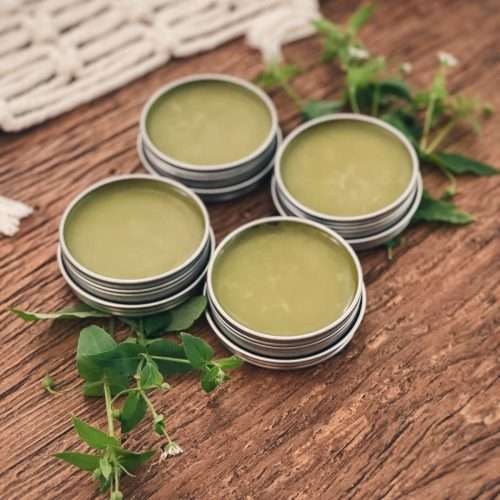
Soothing Chickweed Salve Recipe
Equipment
- Pot
- Glass measuring cup
- Salve containers (2oz) For storage
Ingredients
- Fresh chickweed at least a decent handful
- Extra virgin olive oil (cold pressed) enough to cover the chickweed
- Beeswax ¼ cup per 1 cup of oil
- Essential oils (optional) I like lavender because it has potent wound healing properties, plus it has a relaxing, soothing scent that most people enjoy.
Instructions
- Allow fresh chickweed to wilt (8-12 hours on the counter or 1-3 hours in the dehydrator on low heat)
- Get your double boiler going. I like to use a simple pot of water with a double boiler insert. A double boiler really is essential here because you want to gently heat the oil to extract the medicinal properties from the chickweed, not cook or scorch it.
- Chop up the wilted chickweed using your knife while you’re waiting for the water to boil.
- Add some olive oil to the double boiler, then top with the chopped and wilted chickweed. Give it a stir. Continue to drizzle in olive oil until the chickweed greens are covered by 1-2.”
- Heat very gently for 60-90 minutes; keeping an eye on it and stirring occasionally. You do not want your chickweed to get crispy or “fried!” You know that your chickweed has fully infused into the olive oil when the oil is a dark green color and has a nice herby smell to it.
- Strain out the herbs using a strainer set on top of a glass measuring cup. If your strainer has fairly large holes, I would line it with cheesecloth to keep the big bits out. Discard the chickweed pulp. Make note of how much infused oil you’ve made (1 cup, 2 cups, etc.)
- Return your chickweed infused oil to the double boiler. The ideal ratio for a salve is ¼ cup of beeswax per 1 cup of oil. Add the appropriate amount of beeswax to the double boiler. Heat gently until the beeswax is fully melted.
- Add a few drops of your favorite essential oils, if desired. I like to use 20 drops of lavender essential oil per ~1 cup of chickweed infused oil.
- Immediately pour the chickweed salve mixture into your salve containers. Let cool completely before securing with a lid. This allows any leftover moisture to escape, reducing the risk of mold growth.

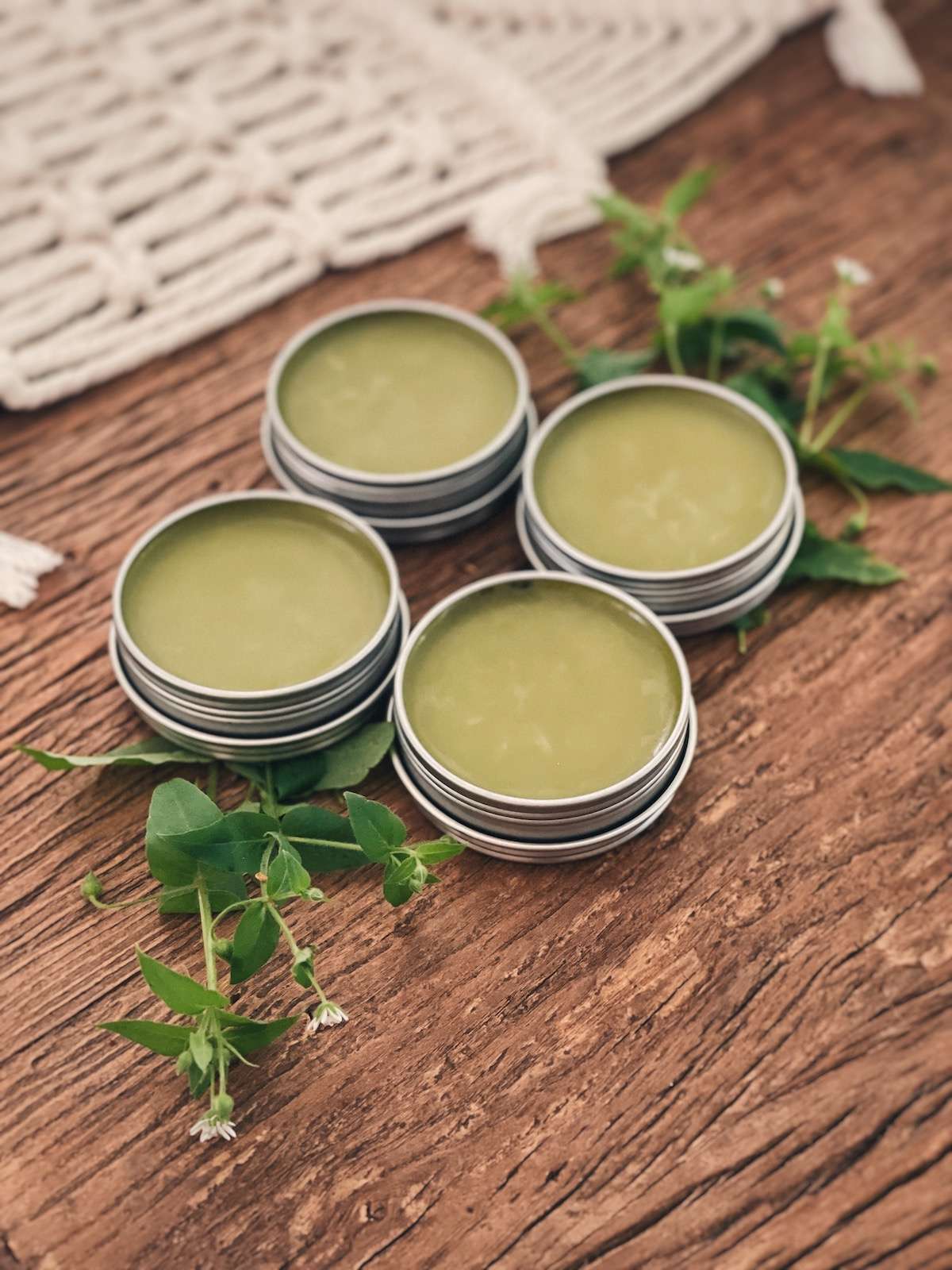
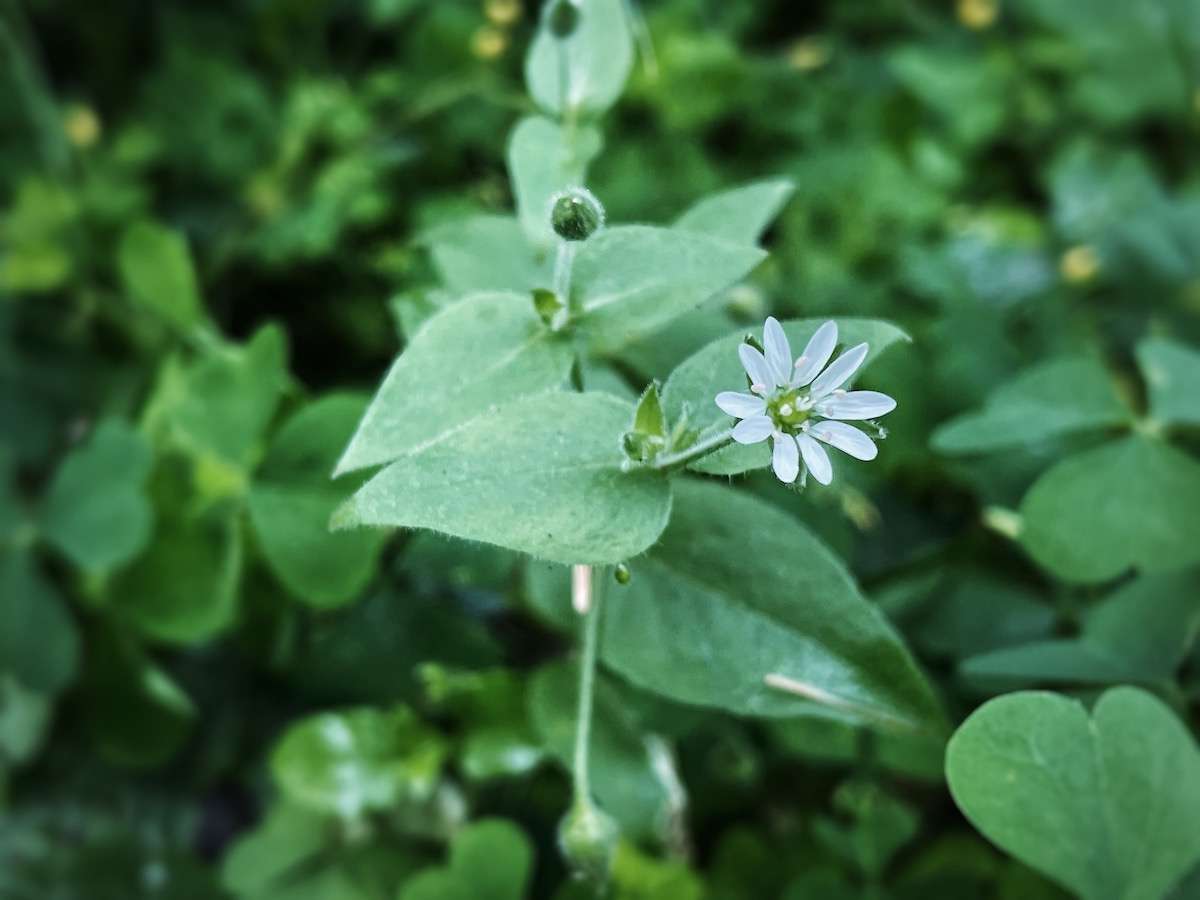






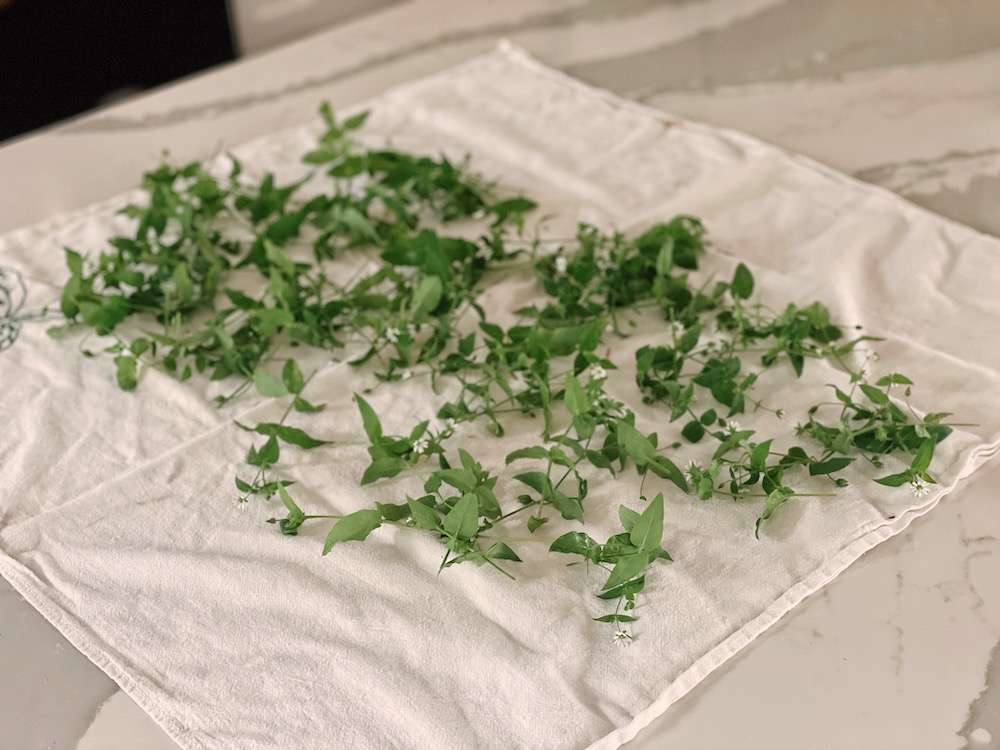
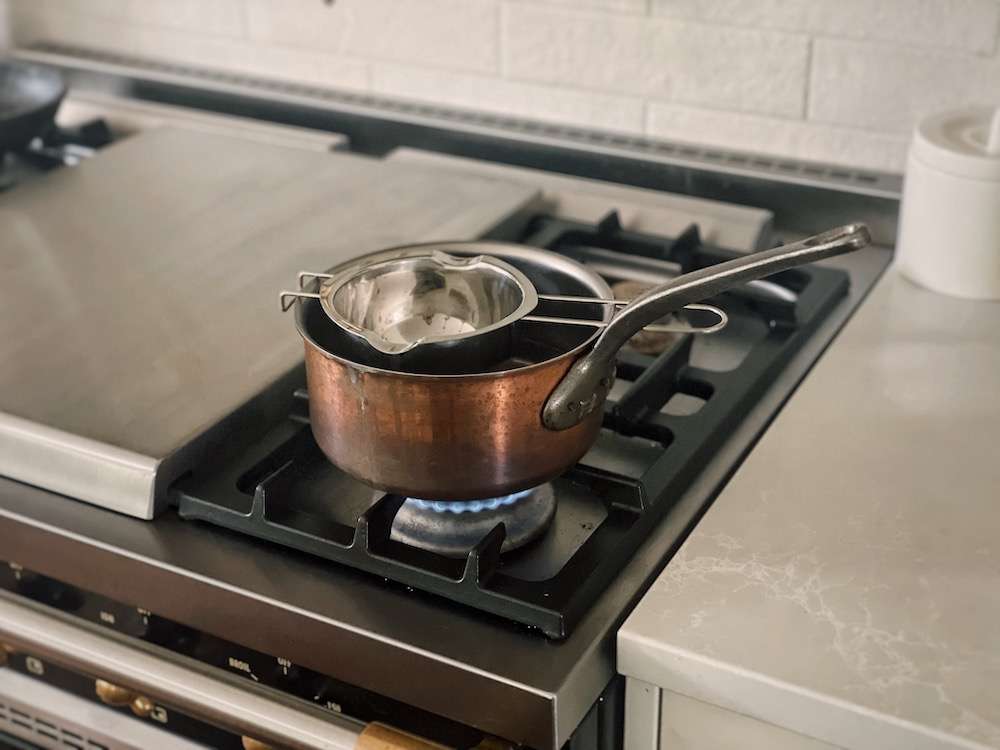
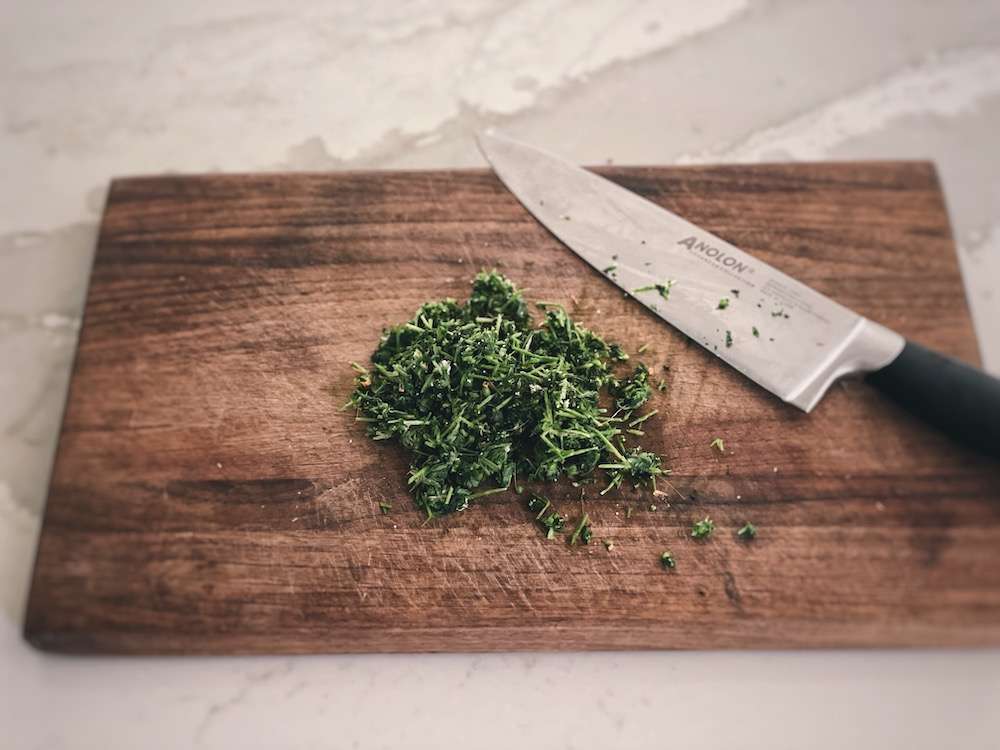
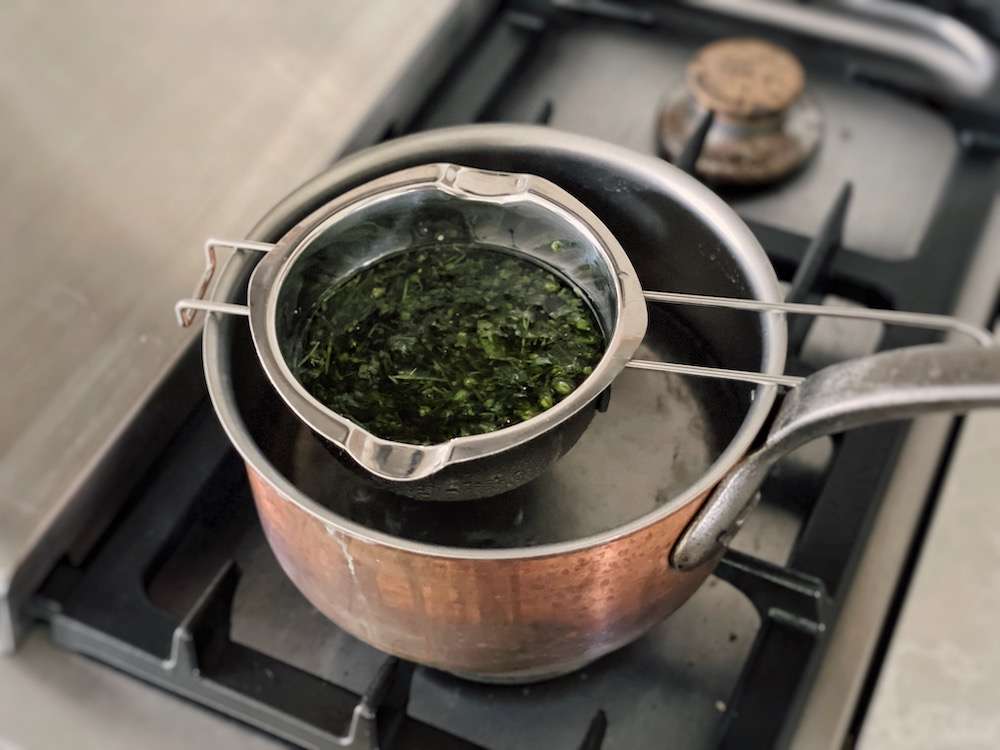
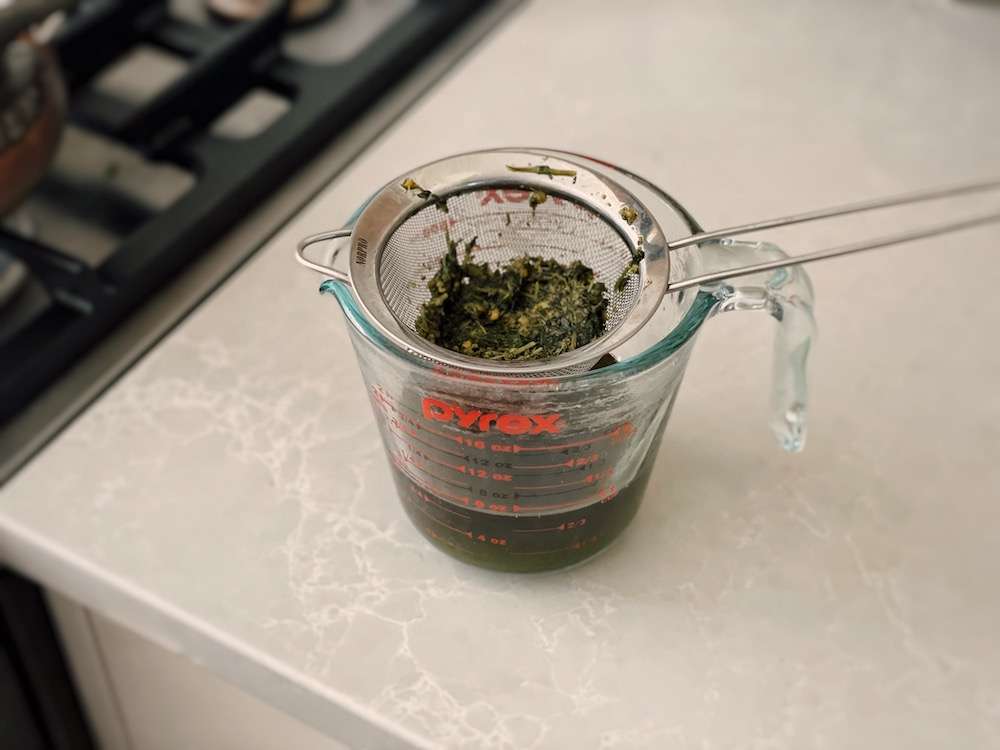
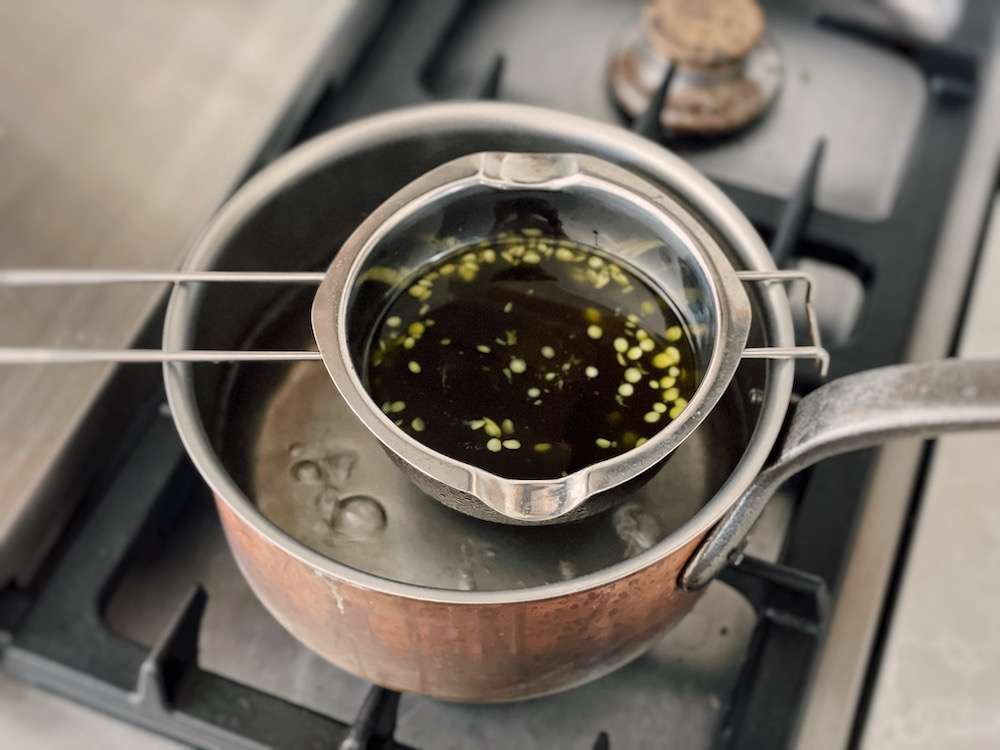
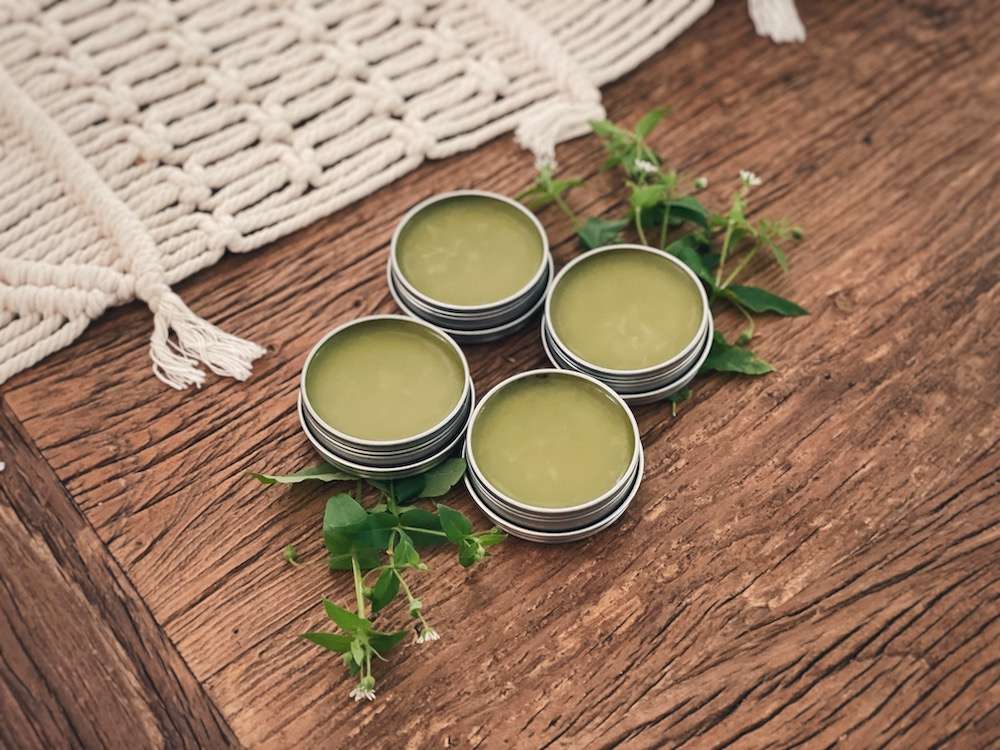


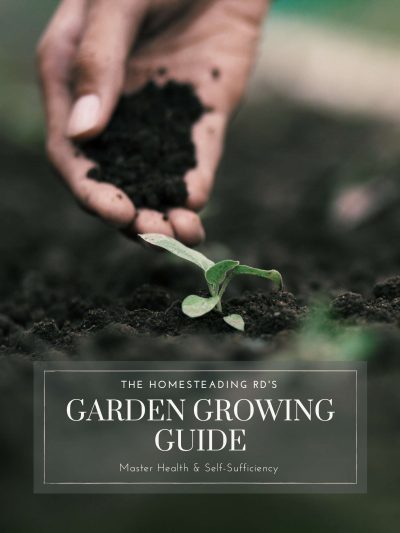
I’ve been buying Chickweed salve from the Mennonite seed and garden store an hour away for years.
It is the ONLY thing I’ve found to get rid of tick bite itching, though it has to be apied several times a day.
I’m prepping the garden today, weeding, and feeding armful of really robust Chickweed to neighbors chickens, donkey and cow, when I stopped and thought “there’s so much of this here, I need to make my own salve! So thanks !
Isn’t it wonderful?! I’ll always have it on hand. That’s so great that you were able to find some fresh – definitely give it a go! 🙂
I have this page saved, I followed it today and made my first salves. I told my family someone needs to get a bug bite now so I can see how it works!
Haha! The mosquitos will be out soon, so I’m sure you’ll get to put it to work before long!
This is great! I love the more natural healing methods! After seeing the results of modern medicine and lack of good food education, I’ll go for a natural remedy as often as possible
I love chickweed. This is a great recipe to have on hand!
Yay! I’m glad to find another chickweed lover
This is interesting. I have never hear of it before. Very thorough post! Thanks for sharing!
Chickweed is a long-forgotten medicinal herb and mostly though of as a weed now days 🙁 I’m hoping it’ll make a come back!
Do you recommend rinsing the chickweed after picking it, or even using fruit & veg. wash first?
It’s probably not a bad idea to give it a rinse with water (I wouldn’t use F/V wash), especially if you find it out on a nature walk and not your own property. Just make sure it has fully dried before using.